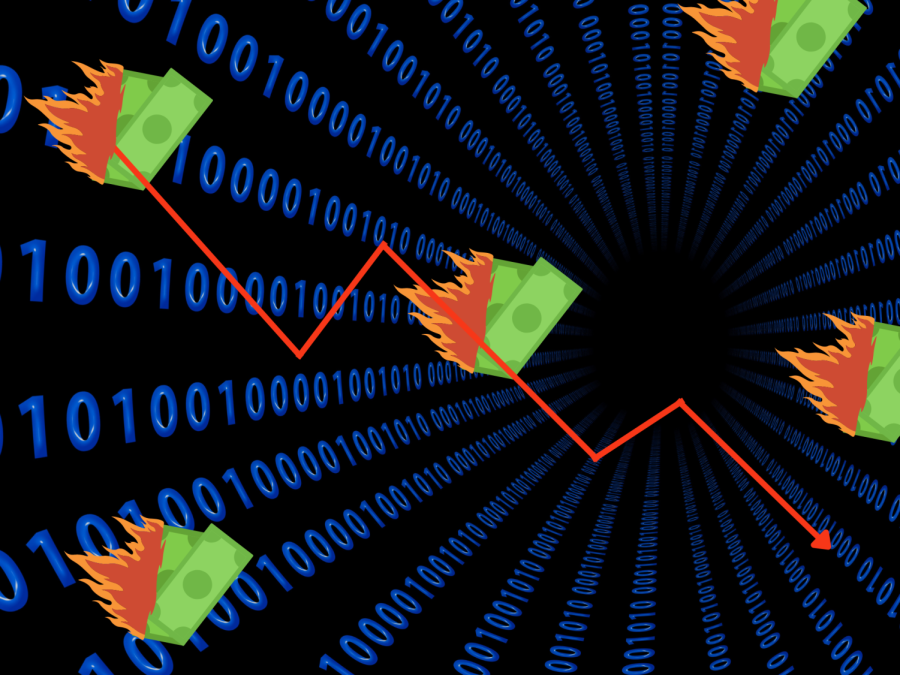GDP reports shows shrinkage in domestic economy
May 7, 2022
A surprising recent report from the U.S. Department of Commerce’s Bureau of Economic Analysis showed that real gross domestic product dropped by 1.4% at an annual rate in the first quarter of 2022, down from 6.9% in the last quarter of 2021.
The decline of the real GDP can be attributed to a decrease in private inventory investment, trade deficit and federal government spending along with other factors.
“Government assistance payments in the form of forgivable loans to businesses, grants to state and local governments, and social benefits to households all decreased as provisions of several federal programs expired or tapered off,” the report said.
For the most part, financial markets were unaffected by the report.
Despite the decline and increase in inflation and looming Federal Reserve rate hikes later this month, business and consumer spending remained high.
Consumer spending, which accounts for two-thirds of the economy, was one of the leaders regarding performance. Consumer spending grew by 2.7%, despite unfavorable inflation numbers.
Still, the course could reverse if labor shortages, supply chain blockages and higher gas prices continue to drag.
This past quarter has been the worst in terms of GDP growth since the start of the COVID-19 pandemic in the spring of 2020.
“Today’s shock drop in GDP is a wake-up call that the economy isn’t as strong as we all thought,” Chris Zaccarelli, CIO for Independent Advisors Alliance, told Fox Business. “It is possible that GDP gets revised higher next month, as this is just the first release and there will be two revisions, but it is a warning sign.”
The BEA report could be an indication that the economy is headed toward a recession. Although many economists believe that conditions will erode, several indicators raise concern.
A spike in COVID-19 cases in the early days of the year muffled growth across the world. Russia’s invasion of Ukraine put increasing pressure on already strained supply chains impacting everything from oil prices to wheat futures.
The growing gap in imports and exports was the leading cause for concern among economists and other professionals. With a 3.2% deficit, imports have exceeded exports.
Net exports reached -5.9%, down from 22.4% in the previous quarter. Annualized exports decreased 5.9%.
Economists continue to emphasize that this report alone isn’t enough to cause concern and that several short term one-off events are responsible for this sharp unexpected decline in GDP estimations.
The Fed’s half a percentage point rate hike could potentially cause worry. Economists think that a recession is unlikely since the interest rate has been close to zero for over two years. The Fed is aiming for 2.75%, but it could be a cause for slowing growth.
This month, the Fed is also expected to continue its monthly bond buyback program, which it paused in order to assist the circulation of money in the economy. The Fed expects to gradually reload its balance sheet, ultimately $95 billion per month.
Goldman Sachs Group Inc. projects that there is a 35% chance of negative economic growth a year from now, parallel to economists’ expectations.
Increasing consumer spending and business expenses over the past quarter provide evidence that the economy and markets can withstand inflationary concerns, rate hikes and ultimately, a recession.







